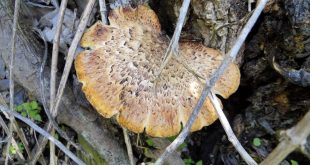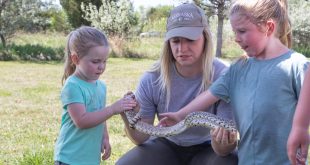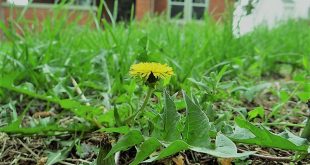The following is an essay submitted to NEBRASKAland by freelance writer Michael P. Gutzmer of Lincoln.
Having the opportunity to grow up going to a cabin on the Platte River can open your eyes to a whole new world of outdoor appreciation…more than anyone can imagine
Someone once said the PlatteRiver was a wilderness treasure. Many of us with the opportunity to visit the Platte on a regular basis think it is priceless.
During my childhood my father would often take me, and later my friends, to our family cabin nestled just a few yards from the flowing PlatteRiver near Columbus. We spent many days and nights exploring the wonders and mystery of nature and learning about ourselves and the world around us. As my friends and I explored the riverbank forests and the many islands on the river, we developed an overwhelming passion for the clear waters moving through the sparkling sands of our prairie river and the “wild” kingdom that lay before us. We were truly in paradise. Connections to nature seem to be more and more limited as society advances. Anyone who has river ground knows what I am talking about.
A few Christmases ago, my then eight-year-old Wyatt and I were driving out to our cabin underneath snow-covered branches for an overnight stay when he said, “Dad, this is the road to paradise.” I couldn’t have said it better. This is a brief story about some of our times at our PlatteRiver paradise, times we definitely won’t forget.
My dad took me to the cabin for the first time when I was five. We fished with setlines in the river for catfish. Then used cane poles in a small pond near the cabin and caught sunfish the size of my dad’s hands. I remember one summer at the age of 10 – Dad and I spent a week fishing, spearing carp, camping in a tent and cooking hot dogs and pork and beans until we were full beyond description. It rained a lot that summer and we got stuck a lot trying to drive close to the cabin. Dad and I laughed a lot and felt like we were on top of the world after a week in the river wilderness. We would go into nearby Duncan and watch movies projected on bed sheets. How could life be any better?
Early memories and impressions with my dad exposing me to this natural world have probably shaped my life, career, and perception like no other experience I can reflect upon.
Through the years my dad became busier and busier, but we would still find time to do some spring canoeing and mushroom hunting. We would start spring with a canoe trip from the Duncan Bridge and float to the cabin on some pretty fast-moving spring water. It seemed like the spring flows were much higher and lasted longer back in the 1960s and 70s when I was just a kid. My dad loved mushroom hunting too, so we would look incessantly over the river’s islands and nearby adjacent bank’. The memories of my dad, gone three decades now, still linger in my head, but another generation of Gutzmers has now become interwoven in the history of my family’s time on the Platte River.
Witchey’ Island
John Witchey and his family first settled “the Island,” as we call it, in 1864. Framed in our cabin is a deed from the Omaha Land Office, signed by Abraham Lincoln, denoting ownership. Witchey died in 1907, and his family sold it to my outdoor-loving relatives in 1913. I have always fantasized about what it must have been like to actually live on the river, with no jet streams, car bodies, motor noises, and the approaching footsteps of a neighboring Pawnee Indian; imaging that that was what heaven was going to be like.
Our original cabin was built in 1913, at a site that has now provided an outstanding conduit to nature for four generations of our family. My ancestors shot more than a thousand ducks each year in the early 1920s and, according to some old journals, caught almost a 100 northern pike from the PlatteRiver in 1917. Pike are very scarce in the river now, if not completely nonexistent, and provide one example of how things have changed just in a generation or two. There have been many changes to the river over past hundred years, but the quality of the natural experience enjoyed there has probably changed little for us river lovers.
As we approach the one hundred year anniversary of our family presence on the river, it’s hard not to think about the countless good times and conversations that friends and neighbors have enjoyed in this Nebraska wilderness treasure known as Witchey’ Island. I also reflect on the connections with nature that have been made in this little piece of heaven for so many and wonder often of its future.
River neighbors can be a close-knit group, and often bond in their unique love of nature and enjoyment of it. The cabins nearest ours are populated with several Nyffeler, Blaser, Oppliger, Norris, Gerhold, Lohr and Rudat families, all of whom have long histories associated with the Platte and their love for it. The same can probably be said for many other sections of this river that traverses the state from west to east and the other families that have many generations of river users in them.
Today my sons, Seth and Wyatt, daughters Alex and Lexie, many of their friends and a few of the Platte River mates of my childhood fill our time on the river. Our family has been extremely blessed with a chance to see the river firsthand and see all that it has to offer.
Over the years our cabin on the river has provided an outdoor playground beyond compare. Many of the activities remain the same, but some new toys and joys have been added to the list. We have engaged in all types of hunting and fishing, carp spearing, camping, campfire cooking, trapping, nature walks, bird watching, bug collecting, outdoor lore, looking for bones and artifacts, edible plant and mushroom identification, learning how to live off the land and many other forms of fun in the past, but in recent years air-boating, ATV four-wheeling, dirt bikes and electronic gadgetry have come into the mix. During our weekend campouts, “camp-overs” as we call them, we let the activities begin as they may, and every day is a new discovery.
In many ways the beauty of the river is found in the variety of activities young minds can think up. In town it’s sometimes hard for a child to use his or her imagination to the fullest, but the river offers a great chance to do that. It seems tomorrows challenges will require some pretty creative minds.
One such activity was a late summer afternoon campout with my sons and a couple of their friends. Spearing carp and other rough fish has been held in high regard since a very early age with these guys. My sons, Seth and Wyatt, suggested we take a couple of the river carpsucker’s we had impaled that afternoon and cook them like they did in the “good old days” – on a stick over a fire. I couldn’t refuse.
River carpsuckers are native fish that resemble carp and are commonly seen in the river during low flows. Much to his (and my) surprise, they turned out to be excellent. He kept raving on how sweet and tasty the meat was, and I had to agree. We cooked them whole with the skin on and then peeled away the meat, something not many in these parts do.
Survival training is hard to find in this society these days and all that we learn from nature and how to use it can only be an advantage in dwindling resource era of all our futures.
As I reminisced and stared at the fire that evening, I couldn’t help but think that there are many things right in front of us every day that might help our diet, enhance our health or just simply make life easier or better. A cattail-dandelion salad may not meet your fancy and river carpsucker on a stick may not win a place on the menu of McDonald’s or Macaroni Grill, but our experience on the river that day altered a perception and created a memory that Wyatt, Seth and I will never forget.
Camping on the river allows a chance for a young person to become a pretty good cook and connected at a young age and develop some thoughts about how man has reached this point in our societal history and our place in the world. Which picture is it? This still has value.
Early Times on the River
Each time I go to the river now, it’s hard not to think about my childhood growing up there.
In my scouting and high school days, I remember staying a couple of weeks each summer down by the river “living off the land” and all the different things we tried to eat. We truly had the chance to take scouting to the “next level.” Lifelong buddy Dave’ Jenson and Gerhold, Doug & Mike Rice and other scouts and I boiled smooth sumac to make tea and lemonade and ate plenty of carp and bullheads. We trapped rabbits and turtles, ate frogs and were Jeremiah Johnson wannabes on “our side of the river.” We worked on merit badges and developed a love for nature that holds strong in our lives today.
As young lads we were amazed at all the edible plants that grow along the river. We collected dandelion and plantain shoots to use as salad greens and we discovered that wild asparagus and wild onion are common in many of the wet meadows close to the river. Wild grape are also common along the river, and while smaller than store-bought grapes, they pack a powerful punch for taste. Wild plums are plentiful as well. Cattails, arrowheads, lotus and several other aquatic plants have large tubers that are starchy and can be eaten raw or cooked as a potatoes substitute. there. We found that mulberries are good in pies and pancakes and became excellent fire builders and camping professionals. One of my fondest memories is a mulberry pie I made in a reflector oven made of aluminum foil. Wow, were we twisted…
As a student of nature since childhood, it has taken a long time to learn and distinguish the diversity of plants and animals in our prairie ecosystem, even as a biologist. It seems once we start thinking we really are starting to know something we become immensely humbled. My eyes have been opened to a wide variety of plants and animals that are free for the eating in this part of the world, native or introduced and I attribute much of that to growing up on the river.
As Native Americans nomadically utilized tepee’ in the Great Plains, and some tribes also built earth lodges, native tribes learned and harmonized with every aspect of nature. The PlatteValley in PlatteCounty, where the Loup and PlatteRivers come together, was home to the Pawnee Indians who used the ample supply of trees in the area to help build their earth lodges. Innately we must be programmed within our own DNA to do much of the same if we have the raw materials and the chance to express it.
Much like my childhood, the fascination of building a fort is high on the list with young, curious boys. River bottom habitats are great places to build forts with all the building materials close at hand. Who doesn’t remember the first fort they built when they were a kid. Fort building may get at the epi-center of our deepest will to survive and harmonize with the land around us.
Cottonwood branches, wood piles, some rope and a few tarps and some imagination we are in business for some serious fort building in the early 21st century. It seems no matter what the activity, the river can sure get some of our inner juices flowing and the desire to create or build something. Usually after some exploring or four-wheeling, the attention always seems to go to some fort building or modification of their existing structures. Whether it’s a new tarp or more cottonwood timbers to fortify the creation, it depends on the day. As the boys get older paint balling, air pistols, exploring and venturing out on their own is more common place.
My son Seth was very proud of his fort he and his friend built on one blistery day and wanted to show his fire building skills in addition to his construction prowess. Seth and his buddy Brandon Hahn worked for many weeks in the fall to secure the fort for what could be a long winter. They were concerned about heat and the ability to have a fire was in their design. The boys worked hard and tried different ways to make the roof that was conducive to a fire. Finally, an external port with ample ventilation seemed to do the trick.
After the first snow the boys tried it out and success was had. It seems the world goes so fast anymore it is difficult to find time to do anything that may entice some creative juices that otherwise may drift idly away in our cyber space world. As the boys get older more and more updates are made to their forts and I ponder what they may build in a world of tomorrow that will rival their childhood masterpieces.
Most any trip to the cabin brings an opportunity to do some form of outdoor or cabin cooking that is hard to beat or rival. Everything tastes better outdoors-right? My sons’ friends often comment on what they would like me to cook again as they don’t get the Platte river cuisine we create around a campfire or smoker back in town, or it sure doesn’t taste as good. Late afternoon brings fire building time for dad to prepare the evening meal. Typically the menu can vary immensely which can include anything from buffalo burgers to smoked turkey legs, beans, campfire bread, biscuits, sweets of all kinds and sometimes some edible plants from the area and fruits that can be found. In the spring, summer and fall we try to cook on a campfire and in the winter we may use our outside grill and/or smoker, but generally use the electric or an old wood stove. The rustic smoke aroma around the cabin and camp is a reminder of previous feasts and sessions of solitude and human bonding. I have always contended it’s the funniest things we remember through our nose. It’s amazing how a familiar aroma can trigger a memory from decades ago and our Platte river experiences have created many aroma memories. It’ nice to know there are still places you can go to invigorate all the senses.
Growing up on the Platte River has given us a window to nature at its finest. On an airplane stranded on the tarmac in Chicago, or stuck in traffic in Denver, a vivid memory of a Platte River sunrise, a bullfrog sounding his territory in a Platte river backwater, or the smell after a rain in a riparian forest can bring a moment of sanity back into our stress filled world.
Sometimes the pursuit of more dollars in the larger cities takes time away from beauty and solitude and the possibility for memories we have right before us in rural Nebraska and the recreational opportunities that await us. Blooming where you are planted epitomizes our times on river. The memories of my dad, now gone almost 4 decades, linger in my head; however, another generation has become entangled in the history of our times on the Platte River and create new opportunities for a connection with nature, that is often hard to find in this new century. A natural setting with those we care about nutures a connection with the outdoors many of us crave and just don’t realize.
As challenges increase with environmental and ecological quality, so must our efforts to address pollution, urban expansion, water depletions and the threats of climate change to our State. Increasing our connection with nature will enhance our understanding in order to preserve it and help young Nebraskan’ see the need for wise conservation efforts in this coming century. Mystery and natures wonder abound on adventures to the Platte River and create the mortar for bonding with those closest to us.
Each time we set foot on the Platte River it reminds me of those before us who also walked these sands and river bank forests and how they must have felt. The memories made and footprints left by these sons and daughters of the Platte River are hopefully ones that can ensure the future of this prairie treasure and set a foundation for success in their own lives and the ones that follow them.
 Nebraskaland Magazine
Nebraskaland Magazine



